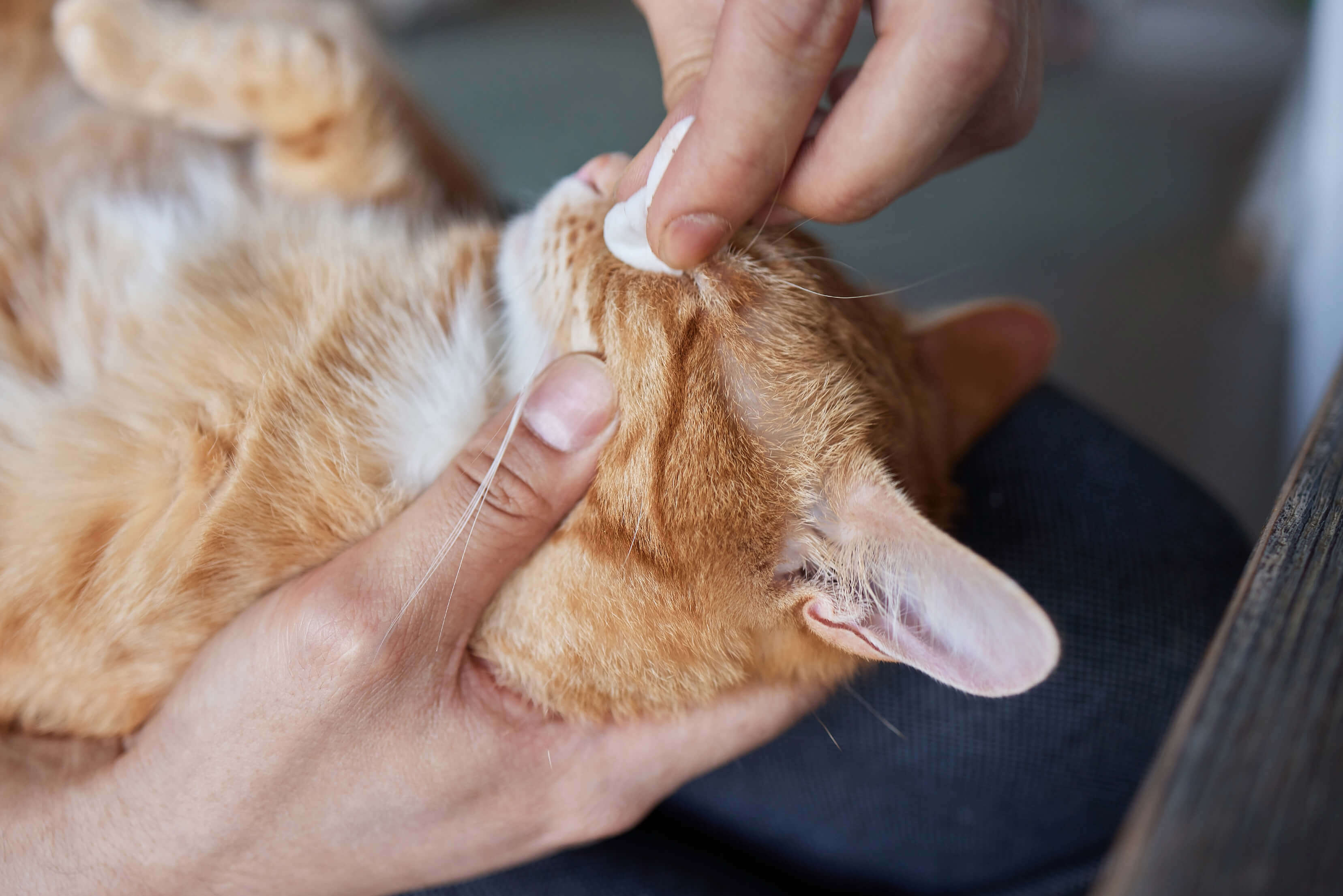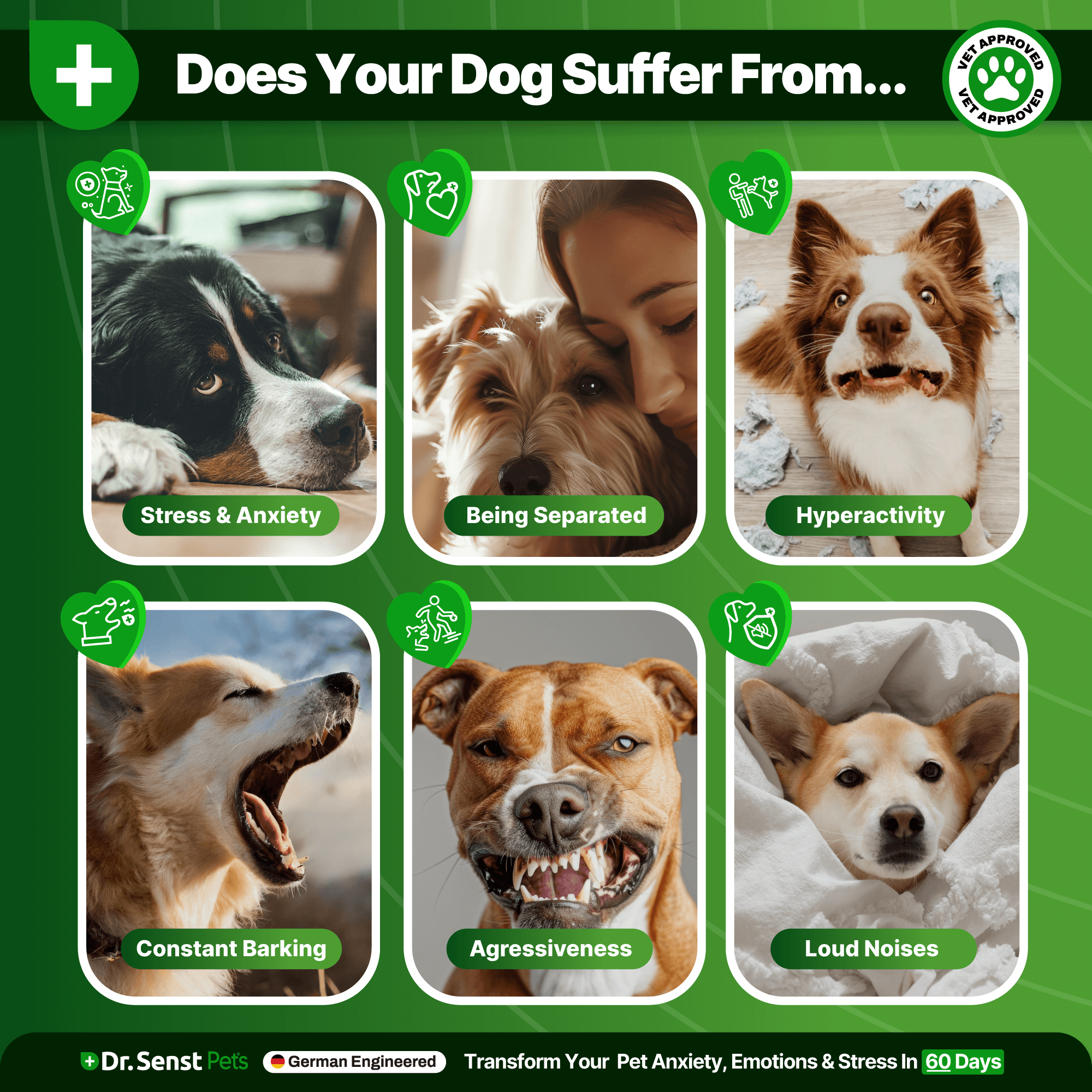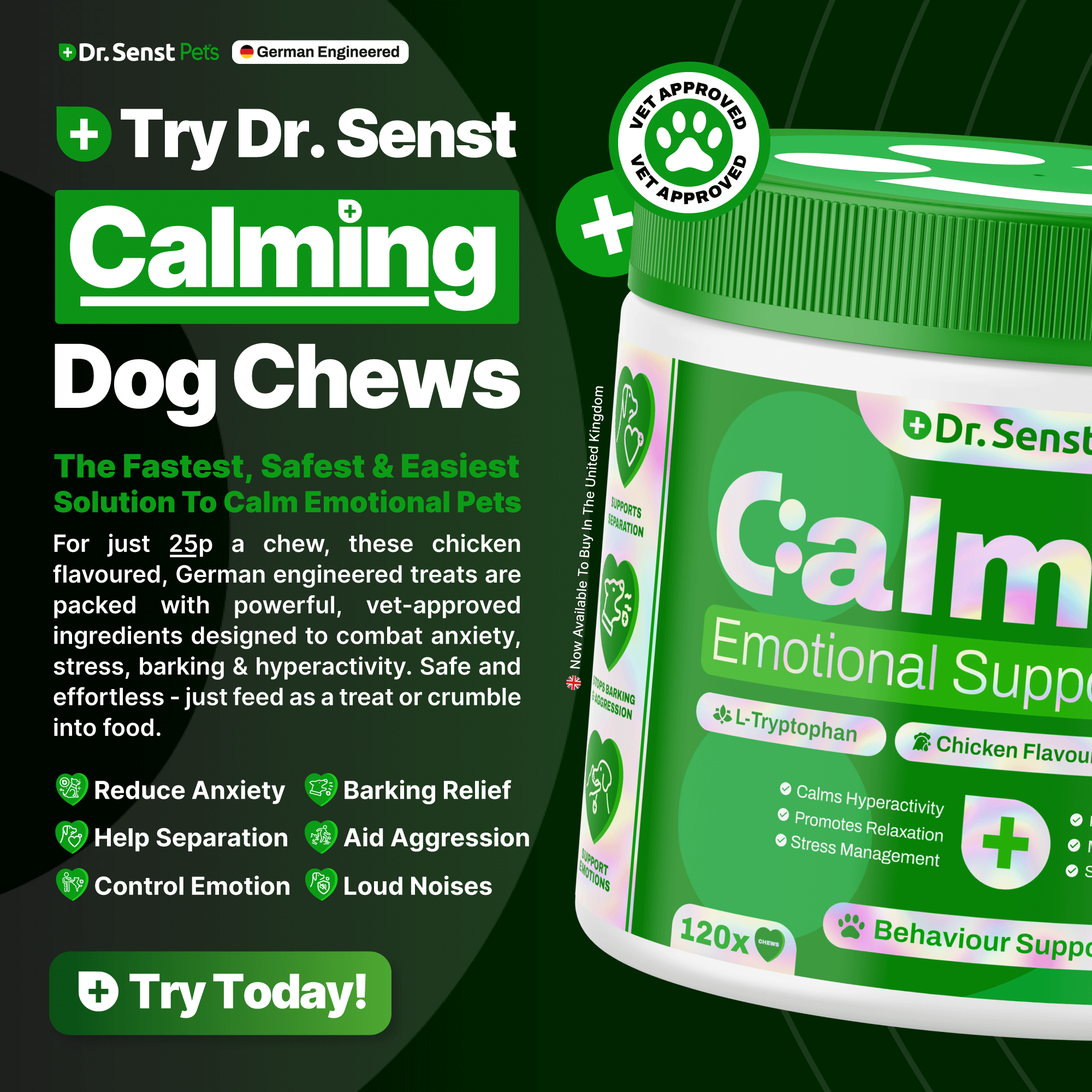
- by Dr.Thilo Senst
From Puffiness to Pain: How to Treat an Inflamed Cat Eye Wound
- by Dr.Thilo Senst
This site uses cookies for better user experience and analytics.

We’ve all been there: one moment, your cat is the picture of regal nonchalance, lounging around like a Victorian aristocrat waiting for you to drop a salmon fillet in its bowl. The next moment, you notice a cat wound—complete with swelling, redness, and a look in your cat’s eye that says, “Yes, human, I am judging you for letting this happen.” So, what do you do when your feline friend’s cut or scratch escalates from a slight scrape to a scene worthy of a Hollywood medical drama?
Welcome to this comedic deep-dive into cat wound care, where we’ll cover everything from the weirdest cat-care misconceptions to the best tips and tricks for managing those pesky inflamed injuries. Expect stats (because we Brits love a good statistic), witty analogies (because why not?), benefits, and an FAQ. By the end, you’ll be armed with enough knowledge to handle your cat’s inflamed cat wound with the confidence of a seasoned veterinarian—minus the official diploma, of course.
So, let’s roll up our sleeves, muster the courage (and plasters for our own potential scratches!), and jump into this rather purr-plexing world of dealing with cat wound inflammation.
Before we start rummaging through the first-aid kit, let’s clarify what’s going on inside that puffy, possibly oozy cat wound. Inflammation is the body’s natural response to injury—think of it like a security alarm system for your cat’s body. It aims to:
The problem arises when inflammation goes overboard—like that friend who gets far too enthusiastic about karaoke night. Instead of a mere cameo, inflammation ends up hogging the mic, leading to severe pain, fever, and potential complications like abscesses or infections that can turn a small cat wound into a full-blown medical crisis.
Here in the UK, we love our pets almost as much as we love our tea. But how often do we find ourselves dealing with kitty injuries? Let’s look at a few stats:
These numbers highlight an important point: a seemingly harmless cat wound can morph into a red, inflamed nightmare if not monitored closely. And if you’ve ever tried to examine an injured cat without losing a limb in the process, you’ll know how essential good tactics and comedic perseverance truly are.
Imagine your cat’s inflamed cat wound is a swanky VIP club door. The “bouncer” is your cat’s immune system, letting helpful cells in (like paramedic white blood cells) while trying to keep out the undesirables (like bacteria). Swelling is the bouncer bulking up to look intimidating—ensuring no shady microbes can slip in unnoticed.
However, if the bouncer gets overly aggressive, it ends up turning away more than just troublemakers. It starts blocking essential healing processes or damaging healthy tissue around the area. The result? A cat wound that’s more puffy and painful than it needs to be—and an owner with a mounting sense of panic. Understanding how this immune “bouncer” functions can help you tailor the right approach for your cat’s wound care.
To know whether your cat’s discomfort is standard healing or cause for an all-hands-on-deck emergency, look for these signs:
Think of the inflammatory process in your cat’s body as a cosy campfire sing-along. At first, it’s lovely: a gentle warmth, a few voices singing sweet tunes. Everything’s amicable, and the area is healing nicely. But if someone chucks in too many logs (or breaks out the bagpipes), the once-delightful blaze turns into a raging inferno. Marshmallows get incinerated, and everyone runs for the hills.
That’s what happens when a mild cat wound escalates into full-blown inflammation: everything overheats, the body invests too many resources, and the cat ends up looking at you like, “Why did you let them ruin our cosy fire, human?” Understanding the line between “gentle warmth” (normal healing) and “raging inferno” (infection) can help you step in before your cat’s wound turns into an excruciating problem.
Why bother intervening early when your cat can obviously handle everything by itself, right? (Cue sarcastic eye-roll from your cat.) Here’s what you stand to gain:
Now that we’ve established the dangers of letting a cat wound fester like a forgotten jam jar, here are some practical approaches to help you restore harmony to your cat’s body (and your household).
No, you can’t scrub your cat with a loofah. But a gentle cleanse with a vet-approved solution can work wonders. If the wound is minor, you might use boiled, cooled water or a saline solution. Avoid harsh chemicals or random antiseptics from the back of your cupboard unless your vet says otherwise.
Dampness can attract more bacteria than free doughnuts attract your colleagues. Pat the area gently with a clean cloth if it’s moist. Resist the urge to smother it in random ointments unless recommended by your vet.
If the wound starts to balloon out or smells like last week’s rotting lettuce, you’re dealing with serious inflammation or infection. Consult your vet, pronto.
Your cat’s rough tongue can irritate the wound further. If they’re fixated on that spot like a Netflix marathon, consider using a vet-approved collar or gently distracting them with a treat-laden puzzle toy. Cue offended cat expressions, but better that than a bigger wound.
If your vet issues medication, follow the dosage meticulously. Cats are cunning—just when you think you’ve disguised the pill in a treat, they spit it out behind your sofa. Persevere. Your cat’s well-being depends on it.
Some cats have allergies or immune conditions that make healing tricky. If your cat’s wounds often turn into a flaming battlefield, consult your vet about possible underlying causes.
While I won’t break into a giant table, imagine one in your mind:
The moral of this imaginary “comical chart” is that you should always keep one eye on potential triggers and the other on your cat’s well-being. Because, let’s face it, they’re not going to fill out an incident report form after tangling with a rose bush.
Q1: Can I use human antiseptic cream on my cat wound?
A1: Only if your vet says it’s safe. Many human antiseptics contain chemicals that are toxic to cats. Felines are small, feisty creatures with unique metabolism, so always double-check.
Q2: My cat’s wound looks better but is still slightly swollen—normal?
A2: A bit of swelling can persist during healing. If it’s going down over time, that’s usually a good sign. If it swells up more or starts oozing, ring your vet.
Q3: Is it okay if my cat’s scab peels off?
A3: Scabs naturally fall off as new skin forms. But if your cat forcibly removes the scab (via excessive licking), it could set healing back. Try to prevent them from fiddling with it too much.
Q4: Do I need to isolate my cat if it has an infected cat wound?
A4: It’s not always necessary unless you have multiple pets who might disturb the wound, or if there’s a risk of cross-contamination. Also, if your cat is easily spooked, a quiet space might help reduce stress.
Q5: My cat’s inflamed wound is near the face/eye—panic time?
A5: Wounds near the eye, mouth, or other delicate areas deserve immediate vet attention. Cats are good at hiding pain, but any infection around the face can escalate quickly.
Q6: When is it time to see a vet?
A6: If there’s severe swelling, heavy discharge, a foul smell, or if your cat seems listless or in extreme pain, get professional help ASAP. Trust me, your cat will thank you (in its own, quietly judgemental way).
No one wants their cat cycling through an endless loop of “get scratched, get inflamed, get treated, repeat.” Here are a few ways to reduce that risk:
When a cat wound goes from “meh, just a scratch” to “holy whiskers, that’s swollen,” it’s easy to spiral into panic. But with a dash of comedic perspective and some well-researched knowledge, you can handle minor inflammations without needing an entire army (or a NASA-level budget). Remember: monitor, clean gently, keep your cat from staging a personal grooming war on the wound, and never hesitate to ring your vet when in doubt.
And, of course, as a final comedic flourish, let’s highlight a few Dr. Senst Pets items that might just make this entire fiasco a tad easier. After all, we’re here to help you (and your cat) skip the drama and get back to normal—well, as normal as any cat household can be.
Dr. Senst Antiseptic Cat Wound Relief Spray - Perfect for spritzing those minor cat wounds with a soothing, antiseptic solution. Keep the drama at bay without losing a hand in the process.
Dr. Senst Cat Antiseptic Eye Cleaner - For when your cat is so stressed about that inflamed wound that it’s practically hosting a meltdown. A thorough clean around the area can help ease the infection and clean away any bacteria.
Dr. Senst Antiseptic Flea Treatment For Cats - Because fleas can turn a tiny scratch into a mega inflamed fiasco. Keep fleas away, keep kitty calm, and reduce your nights of being eaten alive while you sleep.
Choose whichever product suits your predicament, or go full “I’m not taking any chances” mode and get the hamper. Your cat might roll its eyes, but you’ll rest easier knowing you’ve got the best kitty-care arsenal at your fingertips.
Now, take a bow, dear reader. You’ve survived the comedic onslaught of cat wound knowledge, from the earliest sign of swelling to the final squirt of antiseptic spray. May your cat’s whiskers remain as unruffled as its behind-the-ear fur (and may your own arms remain scratch-free)!
![]()
Enter your details & download our comprehensive 50+ page printable Dr. Senst Pet Care Planner completley FREE! - keep track of all your pet’s needs, from medical history and training to vet visits, grooming, diet, and more!

🇬🇧 NOW AVAILABLE IN THE UK 🇬🇧
Our products start from as little as 2p per dose, making it easy to support your pets health without overspending. From general wellness to specific health needs, we have the perfect solution for every pet.
































Share:
Ear Problems in Cats: Key Reasons for Discharge and Indicators to Watch
Stress-Free Adventures: How to Travel Comfortably with Your Dog